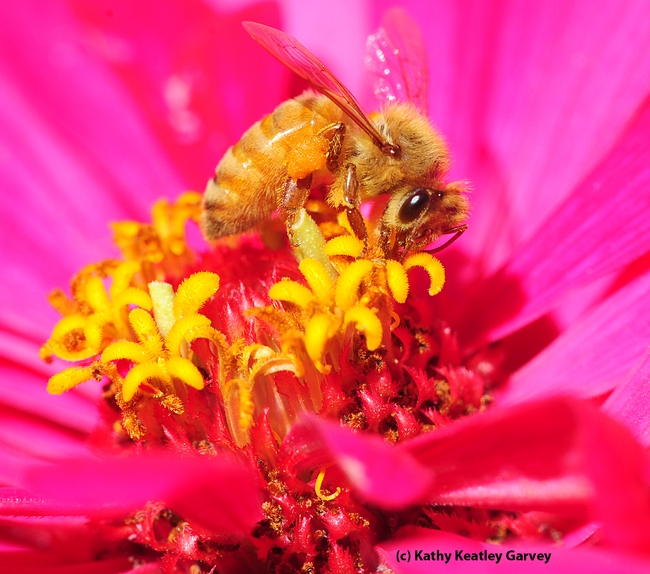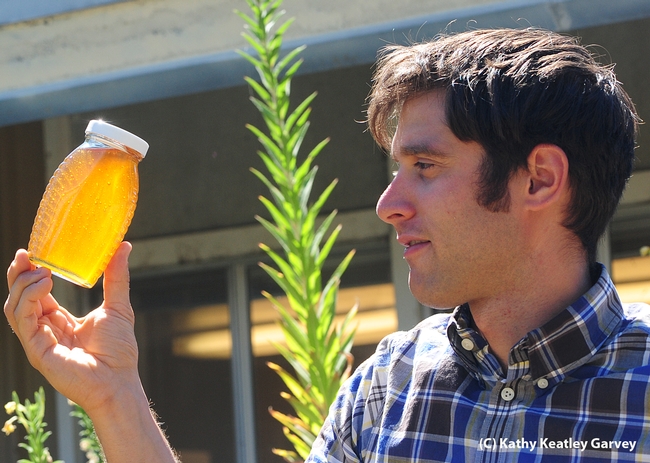Now that's Italian!
The Italian honey bee (below) nectaring on a zinnia at the University of California, Davis, is striking for two reasons: she's as gold as starthistle honey in the sunlight and she's a very young forager.
"That is a pretty young bee to be a forager," said Exension apiculturist Eric Mussen of the UC Davis Department of Entomology. "Look at all that baby hair."
When European colonists introduced honey bees (Apis mellifera) into the Jamestown colony (now Virginia) in 1622, it wasn't the Italian. It was what beekeepers call the "dark bee" subspecies of Northern Europe, Apis mellifera mellifera.
The Italian or Apis mellifera ligustica didn't arrive in America until 1859. "The American beekeeping public was enamored with the newly available yellow and gentle bees," bee breeder-geneticist and co-author Susan Cobey wrote in a chapter of the book, Honey Bee Colony Health: Challenges and Sustainable Solutions. "As a result, Italian-type bees form the basis for most present-day commercial beekeeping stocks in the U.S. Following the arrival and success of honey bees from Italy, U.S. beekeepers developed an interest to try other honey bee subspecies."
Indeed, it took 231 for years for honey bees to arrive in California. Beekeeper Christopher A. Shelton introduced honey bees to the Golden State in 1853, establishing an apiary just north of San Jose. (Check out the bee plaque at the San Jose International Airport.)
Cobey, of UC Davis acclaim, serves as the project leader of the Honey Bee Stock Improvement Program, working with Steve Sheppard, professor and chair of the Department of Entomology, Washington State University, and other scientists.They aim to enhance the genetic diversity of domestic bee stocks through the importation of honey bee germplasm (drone sperm).
Meanwhile, this week over at the Harry H. Laidlaw Jr. Honey Bee Research Facility at UC Davis, staff research associate/beekeeper Billy Synk (who worked with Cobey at Ohio State University) is extracting honey.
If you look at the backlit honey, it looks just like the young Italian honey bee that Mussen says "is pretty young to be a forager."
Attached Images:

